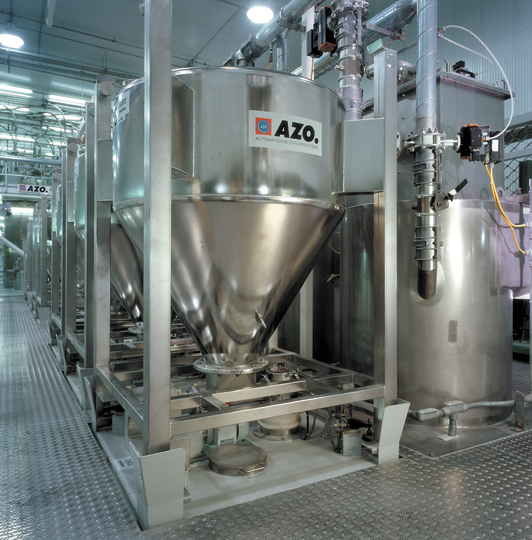
As it becomes increasingly difficult for factories to find reliable labor, the interest in automation technology is increasing. You could even say a trend has started on a large scale. While some businesses have been automating for years, many have not, and knowing what the first steps are toward automating a business’ process can be a real challenge. Even more challenging can be finding the right company to facilitate this change and what production steps should be automated (here’s a hint: not all of them).
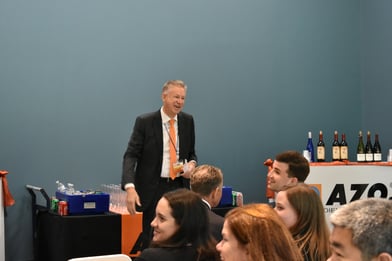
Chuck Kerwin, general manager of AZO Inc., explains how an investment in automation technology saves capital in the long run.
Why does the cost to automate in the present lower future manufacturing costs?
CK: Historically it’s about high quality, accuracy and cleanliness. When you do something manually, there's always a chance that somebody could make a mistake. Companies want to produce a consistent product, and automation gives you that because the recipes are set and the machines don’t make mistakes. Accuracy is more consistent over time. There's also this whole idea that automation is about robots — use a robot to do something that people don't like to do (boring, repetitive or physically demanding tasks).
Today, interest in automation technology has increased due to a tight labor market. When you go to bakery meetings, everybody's complaining about finding quality people. Production jobs tend to be physically challenging and not very glamorous. The baking industry is especially challenging because the shifts start early and the working conditions are usually hot. Not everyone wants to work in those kinds of jobs. Automation can help to solve the labor issues. You can take the whole problem off the table by reducing the number of positions you actually have to fill.
So you’re saying workers aren’t really lining up or sticking around to occupy these positions?
CK: Right, because they quickly realize it's a high-risk, low-reward kind of job. If you do it right, no one says “thanks.” If you mess up, then all hell breaks loose. It takes a special person to work in manufacturing, and the market is very competitive for these talented people.
Do you think the turnover rate is pretty high with these jobs? Do workers on average seem to make a lot of errors in them?
CK: Plants tend to put their best people in the most critical roles, but the problem is third shift. The day shifts are desirable. They can staff that pretty well, but it's the night or rotating shifts that people don't want to work. Most everybody wants to work a normal day (8 a.m. to 5 p.m.).
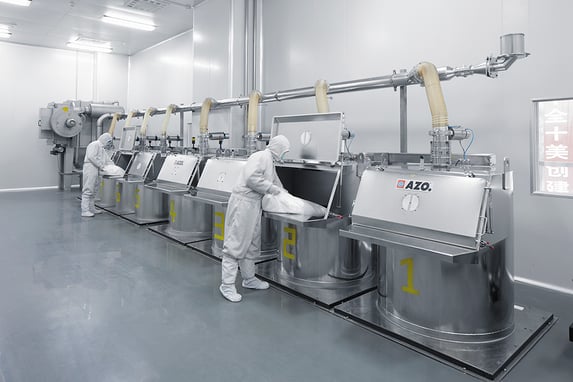
It seems automation might be of interest in every industry, right?
CK: You would think so, but it’s not. We found out in the paint and adhesives industry that dissolver feeding has always been done manually. Managers in this industry insist on manual feeding. When you talk to them about automation they kind of look at you like “We’ve never done that before. Why would we want to do that?”
We think there are a lot of compelling reasons for automation technology, but they see it differently. The baking industry is the complete opposite. They recognize the need, but many think it’s too expensive or complicated.
In any industry, automation is great for repetitive injury-prone jobs. Repetitive motion and working in awkward body postures are some of the risk factors that can lead to work-related musculoskeletal disorders. When workers do the same tasks over and over again for eight hours a day, job satisfaction suffers and injuries increase.
Repetitive-motion jobs tend to result in lower attention levels which can also introduce even more risks. Recourse - HR departments will always support safer work environments, and automation reduces repetitive injury costs while also reducing turnover. If companies have high turnover jobs and can't seem to fill certain spots, those companies are also probably paying overtime to get the required production accomplished, and that increases the labor cost substantially.
It also costs more to hire when companies offer recruiting bonuses to employees who refer someone that gets hired. When HR is focused on just trying to fill jobs with a high turnover rate, other critical areas can go without the proper focus and attention they require.
Robots can do the same repetitive tasks all day long, injury free, and automation can significantly reduce repetitive motion injuries and free up workers for other jobs.
I also know that automation can make working conditions safer. For example, switching to a Bulk Bag Unloader can significantly reduce the chances workers could cut themselves using knives to cut open multiple bags in a day. We’ve covered this in some previous blog posts, but would you say typically that automation makes operations safer?
CK: Yes, I would say that. It’s also important to remember dust exposure. When handling bulk powders, the way in which they are handled can impact the amount of dust that goes into the work environment. Fugitive dust affects the workers, attracts vermin and increases the chance of a fire or explosion. You want a clean work environment — you want to minimize the dust.
The worst case with dust is a fire or explosion. When you design a system, you design it so it’s safe. It has safety functionality built in so that, in the unlikely event of a fire or an explosion, it remains contained. Without containment, a small incident can turn it into a big problem really fast. As things start rattling and imploding, the dormant dust will enter the atmosphere, adding to the problem.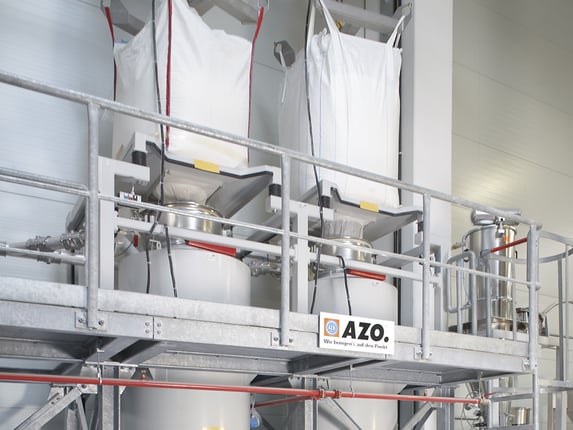
So would using automated machinery reduce this entirely?
CK: It helps, by reducing the amount of ambient dust that’s in the environment. A small incident will not escalate because there is less fuel in the work environment.
So like you said, it is expensive to buy into automation and to change, but it does speed up production. At what point do you think that pays off?
CK: It depends on your operation. If you are capacity constrained, automate a bottleneck. If you have quality issues due to production problems, automate that problem area. Invest where you get the quickest payback. Whether reducing costs or increasing output, you'll likely find project support from your finance department if the impact is substantial.
There are also costs besides direct labor which can be reduced by automation, and there are times where you can make a big difference by plugging in a "component" without a full system.
Traceability is huge. You can have people sign checklists, but auditable automated processes offer more reliable results. Keep in mind that as there is a finite amount of capital, just because a project has a return, doesn't mean it gets funded. Other projects may have a higher return, or may be a greater risk to manage.
Some cases are complicated. For example, if you only save 3 hours per day, this act might not factor into actual labor savings as you can't really have a 5-hour worker.
Still, if you can't meet production requirements you could jeopardize current customers and turn down potential ones.
For plants that have never taken the first steps toward automating their processes, how would you typically answer common questions about where to begin?
CK: Owners and managers have their own idea of what needs automation. All too often we've talked to clients that have a grand idea — “I want to automate the entire process, all my ingredients.” When they find out how expensive that will be, they say “Oh, I can't possibly afford that.” So they walk away from automation entirely and say it's too expensive.
The secret is to automate only the stuff that makes sense to automate — start small and expand from there. The things that are not used very often don't need to be automated. If you have a problem, try solving it with automation. That's where I think you really need a consultant — you need somebody to point you in the right direction.
Often we start with accuracy. If you do it manually, barcoding ingredients allows the operator to interact with the machine to confirm the right ingredient has been measured to the right amount. That's a check and balance in a system that says, “Hey, let’s double check what was just done.”
Kind of like a second way of clarifying?
CK: Correct. Even though it's still being done manually, there's still some automation that goes along with it. It's almost like a little bit of artificial intelligence. It helps the operator do their job accurately and with traceability.
Are there any examples specifically of ingredients that you should not automate?
CK: Solids that don’t flow very well. Liquids with high viscosity require special handling. Special ingredients like raisins — they’re a pain in the neck because they’re sticky.
Is there generally a difference between the way German companies and American companies operate in looking to automate their processes?
CK: German companies work with very specific European specifications. U.S. plants tend to be bigger and run larger batches, but automation is further along in Germany since they’ve been dealing with a tighter labor market for a longer time than here in the states. AZO can bring our European automation experience to help our U.S. customers.
Bottom line — automation is about getting the most bang for the buck. How much do you want to spend and what kind of benefit are you going to derive from it? AZO can help you make the right automation choices.
How do you offer the right insight to determine what specific processes plants should start automating?
CK: AZO has 70 years of experience. Chances are we can say, “Oh yeah, we've seen this before.” We know the pitfalls because we’ve seen it all. These days, more customers have done the research. They have some idea of what they want to do. There may be some unrealistic expectations about what can be done or how much automation is needed. Our equipment is custom-designed, so we can do just about anything they want done. The only thing separating our customers from their dreams is the size of their budget.
We have many ways to match the design with the budget. Accuracy is expensive. We also look at size of the weighment versus the required accuracy. Sometimes you run into customers who say, “I’ve got a 5,000-pound batch, and I want it accurate to two grams.” We could build a system to do this, but it would be very expensive. In effect, you need two systems because of the accuracy requirement. We would ask if that precision accuracy is needed for that product.
Tell me about some specific systems that will help to measure materials. Are there any AZO-specific solutions worth noting?
CK: A ManDos system is a series of manual bins that are “wired” together and barcoded. As you go through the list of ingredients, it confirms what’s being put into the batch (the right amount and the right ingredient). Everything is measured, everything is scaled and everything is cross referenced with the stored recipes. Best of all, you’ve got traceability on every batch. It’s all stored on the computer. 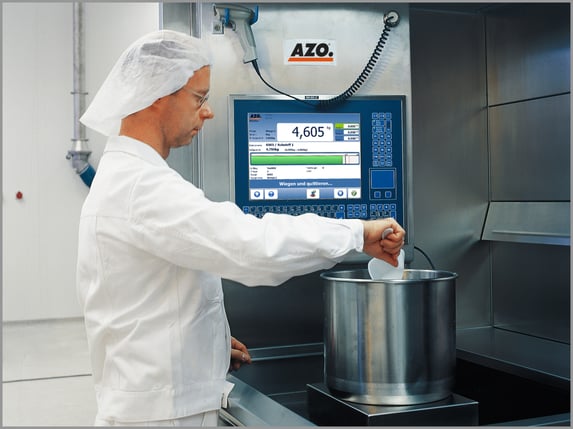
Lastly the batch can be barcoded and put into inventory. It's already weighed up and ready to go to production.
We have customers that do all their “batches” on first shift. Batches needed for second and third shift have already been prepared — they're all ready to go. That eliminates one position on the hard-to-fill second and third shifts.
AZO Inc. has spent 40 years sharing robust innovations from Germany with the United States and helps to successfully automate ingredient handling in a large number of industries. Our automated systems can help improve product quality.
A great way to start achieving a new level of degree and accuracy is by checking out our configurator. We also offer a wide range of bulk bag discharging products that fit your needs. If there are any options you don’t see listed, contact our sales engineers. Our team has years of application experience to help you with your plant automation challenges.


